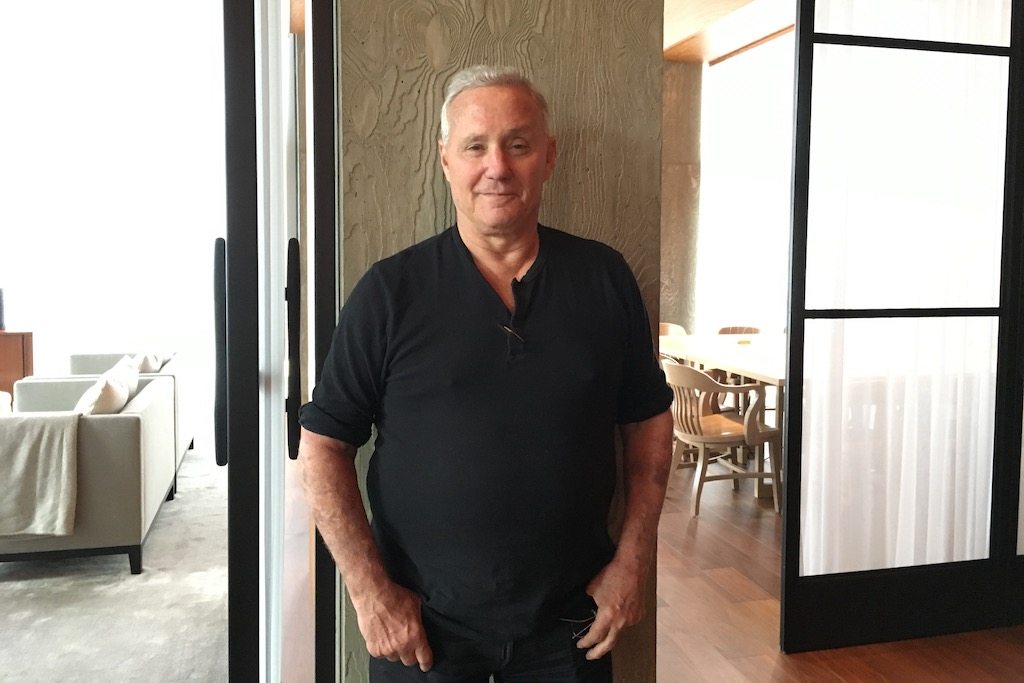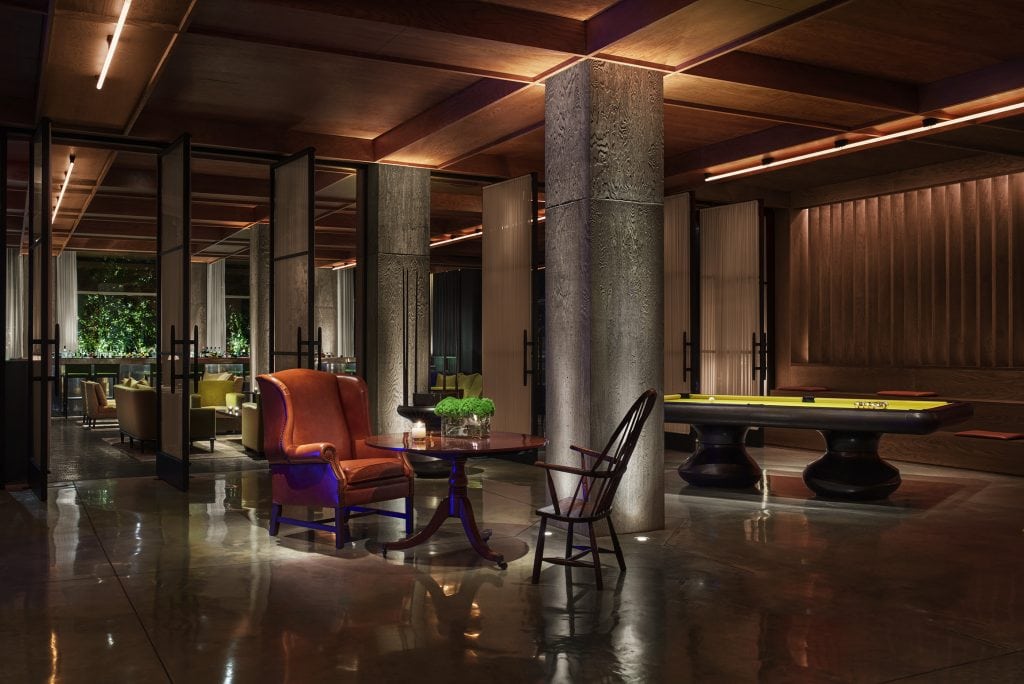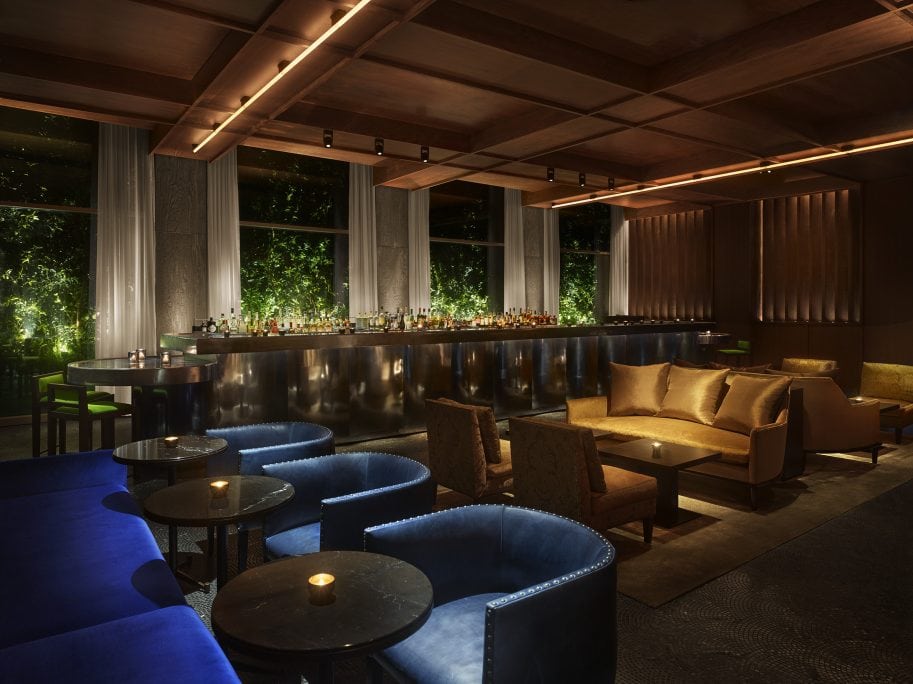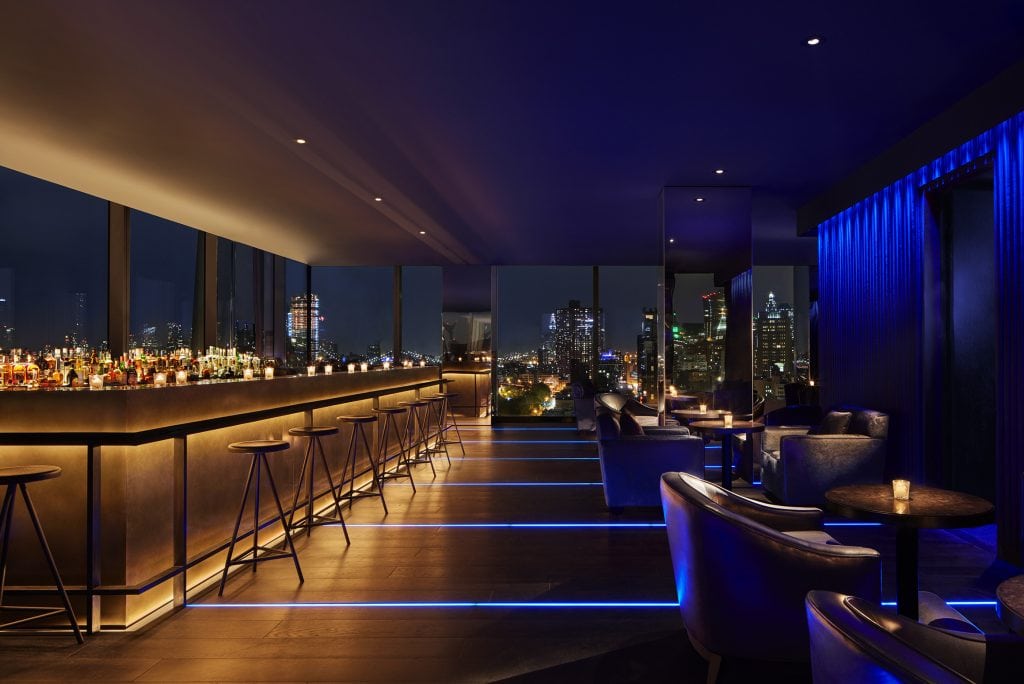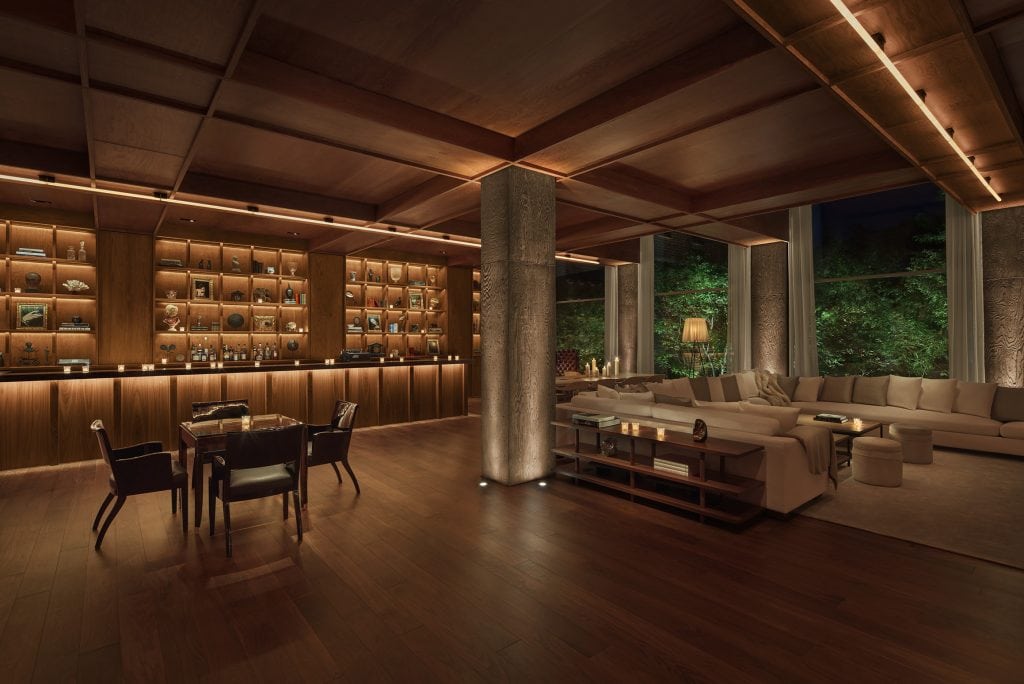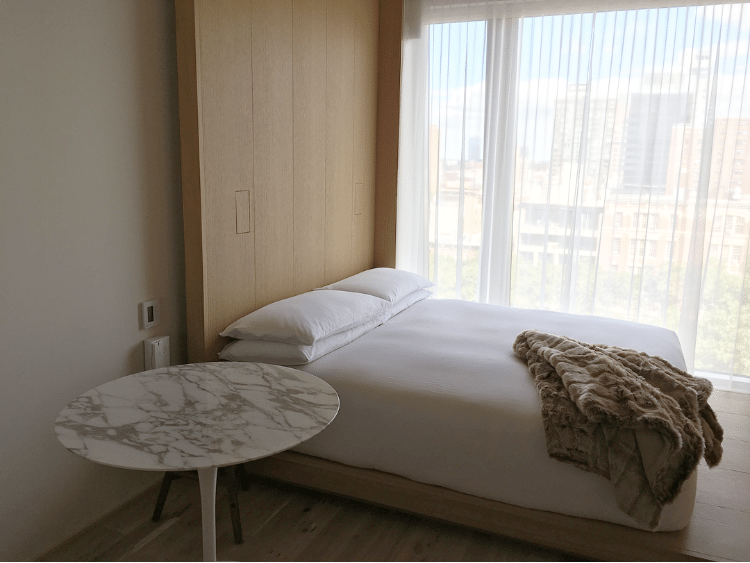Skift Take
The next generation of boutique hotels, according to Ian Schrager, is about adding technology and business smarts to the tried-and-true formula that he and other boutique pioneers perfected nearly 40 years ago.
Ian Schrager is elated and justifiably so.
Just the night before, on June 6, the man often credited with being the pioneer of the boutique hotels movement in the U.S. opened his latest hotel: the 370-room Public in New York City’s Lower East Side neighborhood, complete with nearly 1,500 revelers and featuring a performance from Patti Smith.
“This morning was magical for me,” Schrager said. “It’s like all hell breaks loose, and the next morning you’re anticipating all this damage, but nope, everything is perfect.”
Indeed, from the looks of it, there are hardly any signs of the opening party from the night before throughout the hotel, which was still bustling with activity on a sunny afternoon.
The Public New York, located on Chrystie Street, was four years in the making, and it marks the first hotel Schrager has opened on his own since he opened the first Public Hotel in Chicago, back in 2011.
That hotel, which Schrager and his investment partner, Morgan Stanley, sold for approximately $60 million in 2016, retains the rights to the name “Public Chicago” until next month. It was Schrager’s initial attempt to redefine “affordable luxury” in the modern age.
But with the New York property, a new build, it’s clear Schrager feels he’s finally been able to execute the vision he’s held all along for the Public Hotels brand as a reinvention of the boutique hotel into something that can offer “luxury for all.” It’s a tagline that might seem at odds with the velvet-rope driven scenes he once created with his business partner, Steve Rubell, long ago in the early 1980s, first with Studio 54 and later with his hotels.
“The one in Chicago is a renovation,” Schrager explained. “It started out originally to be a luxury hotel, but then, when I got to know Chicago, I realized that a hotel in that section would never be able to compete with the luxury hotels on North Michigan Avenue like The Ritz-Carlton, like the Four Seasons … So I thought the only way we’d be successful would be if the hotel offered great value built with great style, and there were a couple of the embryonic ideas there, but they didn’t really get truly refined, and the development process continued from there on to here.”
This isn’t the first time that Schrager has opened a hotel that catered to value-driven guests but he believes that this is a space the hospitality industry should be paying more attention to, and reinventing.
“I had done, in 1990, the Paramount Hotel,” Schrager said. “That was cheap chic. Then in 2000, I did the Hudson Hotel and that was also a less-expensive hotel, so this space is not new to me. I think it’s always been traditionally the most profitable space in the industry. I think the most successful brands in the industry have been Courtyard by Marriott, Hilton Garden Inn, and Residence Inn.
“But I find the same inefficiencies there that I found in the boutique hotel space 25 years ago, where they stripped down services. It was less expensive, but it had close to a 50 percent profit margin. So, I thought very simply put, if you can add some exciting food and beverage, which we can do, if you can add some great style and be visually provocative and you can add great service — which is critical to the whole idea — and you could all make that available at a very accessible price that anybody could afford, it was just a great idea.”
This idea for a “people’s hotel,” Schrager said, could easily scale to 1,000 or 2,000 hotels worldwide, while with the traditional boutique hotel, the expectations for scale would be closer to 75 or 100 properties. Even with its glowing escalators, luxurious public areas, and sophisticated stylings, Public New York’s starting room rates are only $150 per night — a rarity in Manhattan for such a prime location. Whether those starting rates will always remain $150 a night, however, remains to be seen.
A New Kind of High-Tech with High-Touch
The secret to scaling the Public brand, and keeping its rates so low, lies in its disruptive, tech-reliant business model.
There is no formal front desk. Guests check in on their own using an iPad in the lobby, or they can be assisted by a “public advisor.” Checking in includes activating your own room key at the iPad kiosk.
The majority of rooms range in size from 205 to 220 square feet. “It allows us to make booking of the rooms over the Internet and through technology, rather than to a reservationist, very easy,” he said.
Instead of charging fees for things such as room service and Wi-Fi, Schrager said he’s using technology to streamline the process and cut down on labor costs in the process. He estimated that the number of staff is only 50 for the 370-room hotel.
“We outsource a lot,” Schrager said. “We kept inside the brains and outsourced the brawn. When you call on your telephone, you’re speaking to an outsourced person — not a robot, which to me is contrived — but it’s really taking advantage of this sharing economy, and outsourcing economy that’s happening right now. Everything’s being changed because of it. Why aren’t hotels doing it?”
Schrager isn’t alone among hoteliers concerned about the rising costs of labor. R. Mark Woodworth, senior managing director of CBRE Hotels Americas Research said that among hotel companies, “the cost of labor is, by far, the No. 1 area of concern.”
Room service, for example, involves messaging the hotel with your order, and picking up your food from a shelf located near the lobby-level elevator bank — something Schrager said was inspired by UberEATS, Sweetgreen, and Starbucks, as well as a viewing of the film “The Founder,” which chronicled the development of McDonald’s fast-food business model.
“We also used to charge for Wi-Fi, and people started getting aggravated about it, and you would have a net loss of customers because they would be aggravated by it,” Schrager said. “So nobody charges, or at least we don’t charge for Wi-Fi, and we have super, super-fast Wi-Fi.
“You can have room service if you’re willing to pay a $5 or $6 of $7 delivery charge. If you’re willing to wait 45 minutes to get it for breakfast, and you’re willing to pay $30, $35, or $20 for a pot of coffee, I think people get pissed off at that. … So, we thought, one, wouldn’t it be better if you then get your food quick, within five minutes. Two, you’re not paying a delivery charge, and three you’re not paying exorbitant prices. It just makes sense to me. I also cut out and changed all those services I don’t feel people care about.”
Guests who need an extra towel or amenity simply message the hotel to find the location of a designated “amenity room” where they can pick up what they need themselves, or ask a staff member to deliver it to their room.
Instead of asking guests to download an app to communicate with the hotel, Schrager said he developed a proprietary chatbot messaging platform through which guests can text using iMessage, SMS, WhatsApp, and Facebook.
“We find, statistically, maybe [hotel] apps will be more [downloaded] in the future, but right now less than five percent of the people in the hotels use them,” Schrager said. “So when they do download them, they usually delete them after they leave, so a chatbot is something on texting where you can instantly use it, and it’s the way we’re trying to make the technology make the stay without hassle, and quick, make everything done quickly.”
Schrager said the chatbot platform will also communicate with guests at the time of booking, as well as prior to arrival, and will keep the guest informed of the activities and programming taking place throughout the hotel.
Schrager asked, at one point, “Did you see the movie The Founder? … You know what McDonald’s did to the food industry? Why can’t we automate the execution in the hotel business, but bring back the amenities through the services and the visuals of food and beverage and the entertainment factor, but automate the rest of the stuff? Make it as efficient as possible so you can pass those savings on to the guests.”
But, and especially in such a service-oriented industry such as hospitality, can hoteliers really afford to automate processes to a point where they diminish the human element? Will guests find it hard to get a hold of a Public Advisor if there are only 50 spread out throughout the hotel? That’s something the industry will be paying very close attention to over time.
Offering What Airbnb Can’t: True Social Spaces
Earlier this year, Schrager told Skift he believes the hospitality industry is “a me-too industry” and he still believes much of the industry is still “in denial” about the homogenization of hotels, as well as the looming threat of Airbnb, which many of his hotel peers often won’t publicly accept.
He compared what’s happening with hotels and Airbnb to what’s happening in retail with brick-and-mortar stores increasingly competing with e-commerce retailers, as well as the current struggle between hotels and online travel agencies (OTAs) like Expedia and Priceline.
“You have Airbnb that aspires to be in our business, that had hotel people working for them, and advising them, that offers a good value and tries to say ‘We’re offering a manifestation of the city that you happen to be visiting,'” he said. “So, to me, I think they are a mortal threat to our business model. Mortal. And I think that the hotel companies were also in denial about the OTAs 15 or 18 years ago. This is the same thing, and I think the fact that they’re [the hotels] trying to prevent them [Airbnb] from expanding through politics and laws and the court says it all to me.
“Why are they doing that then, if it’s not a threat? So, I think it’s just so obvious to me. Maybe they can’t say it for whatever reason, and you’re a lot smarter than I am. I’m just telling you, I know it’s [e-commerce is] a threat to the retail industry, and I know Airbnb is a threat to the hotel industry. What we should be doing, instead of trying to slow them down, is to fight a strong idea with a very, very strong idea.”
Schrager’s strong idea is — you guessed it — something like Public, and he credits being an independent hotelier with allowing him to take risks where other larger companies like Marriott cannot.
“Now to me, I have no interest in being the biggest hotel company in the world,” he said. “There are big companies out there run by really brilliant guys. Marriott is a really good example, and I have nothing but the utmost respect and admiration and affection for Arne Sorenson [Marriott CEO], and all the guys. They’re really the best and the brightest, but they own a big company and they have profit shareholders, and they do everything by consensus, and I don’t do it that way. I can afford to really say what I think, and I can afford to make a mistake. A big public company can’t, you know? So, I appreciate that now and respect that.”
Drawing on his experience as the co-founder of New York’s iconic Studio 54 nightclub, Schrager said he’s learned that focusing on communal spaces, entertainment, cuisine, and other programming is absolutely essential, which is why Public New York has five different food-and-beverage outlets, including a panoramic rooftop bar, and a multi-purpose space called Public Arts where you can attend screenings, art exhibitions, performances, or dance the night away.
Speaking of Public Arts, Schrager said, “it gives it longevity. It gives it a depth and dimension, so you can have that but have that evolve into a night club later on, and not have to move. An Airbnb can’t do that.”
He added, “It [Airbnb] used to frustrate me, but I think, hey, you know how you want to compete with Airbnb? Forget about lobbying to change the laws. Why don’t you come up with something that provides what they can’t provide, like a huge social communal space? They can’t do that. That’s where you should be focusing on, and by the way why not come up and do a hotel that manifests the city that it’s in, because that’s what they’re trying to do. That’s what we always try to do.”
Schrager described the bars and eateries at Public New York as a “microcosm of the best that New York has to offer.” The hotel’s main, all-day restaurant, Public Kitchen, and its grab-and-go kitchen, Louis, are both helmed by famed chef Jean-Georges Vongerichten.
There’s also a clear emphasis on offering public spaces that you might otherwise find in a co-working space: stadium seats where you can sit and talk or work on your laptop, and large communal desks with electrical outlets in the very center.
Schrager called it “distinctive networking” for a “new kind of business hotel.” For example, he said, “You don’t only go to a country club to play golf. You go there to network, so the co-working brings a network in the area, in the social area, that I think is the next generation business hotel.”
Schrager added that should he ever pursue an extended stay project, he would also incorporate aspects of co-living, or group-style living arrangements.
“I love the co-living … I think it’s a modern way of living, and I think young people appreciate it, but I think everybody appreciates it,” he said.
Boutique 2.0
Public New York’s blend of technology and social spaces inspired by co-working and co-living makes it an affordable — and attractive — business model for hoteliers, developers, and guests alike. But what keeps their interest is the fact that all of this is done in a way that’s “not stripped down and dumbed down. It’s sophisticated. That to me is the future,” said Schrager.
To hear Schrager summarize what he’s doing with Public, it’s seemingly a reinvention of what he did long ago with his first boutique hotels in New York City.
“If I strip out the enthusiasm that I have, it’s nothing more than the same thing I did with a boutique space 25 years ago,” he said. “I went into a three-and-a-half to four-and-a-half-star space. I brought great design and style, exciting bars, exciting restaurants, and I brought that kind of razzle dazzle pizzazz into that sleepy space. That brought skepticism. Well now, I think it changed the whole industry. It took 20 years for the skepticism to wear off, but it’s changed the whole industry, not only by them doing lifestyle hotels, but because it’s affected their other brands as well. Now, I want to go and do that exact same thing, but I want to do it in the three-star space.”
Unlike the predominant three-star, midscale, or select-service hotels we see today, Schrager says the new boutique hotel of the future can’t just offer limited services and a good price.
Of those hotels, Schrager said, “They don’t do food and beverage if they can’t make money at it. They don’t gotta be this kind of really sophisticated design that will attract the kind of people that this will attract. They’re not going to offer the kind of great service that I think we’re going to … Their version of a three-star hotel is a stripped down, dumbed down, one-size-fits-all service, and I’m very reluctant to give that ‘three-star’ thing [here] because I don’t want people to misunderstand what this is. Because this is as sophisticated as any luxury hotel out there, and I feel the service is as good or better than any hotel out there, but it happens to be less expensive because of the business model.”
He said that while most people thought boutique hotels were so disruptive primarily because of their eccentric designs, their true power was in their cost-efficient business model.
“Everyone liked to talk about the design and the celebrities that came there, but people didn’t talk about the business model, or the fact that you don’t change your room every five years … Nobody ever realized that there were business benefits to it, it wasn’t just the color of the carpet.”
When asked about his peers’ latest forays into the midscale market, including InterContinental Hotel Group’s soon-to-be-announced brand and Trump Hotels’ latest, called American Idea, he said, “Look, they may do it well, but it won’t be like this. I’m not looking to bargain hunt. I’m looking for people that want to pay less and get good value for their money. There’s a difference. I think the traditional three-star space, the traditional select service is looking for a bargain hunter. I’m not looking for bargain hunters. I’m looking for people like myself that don’t want to get ripped off.”
In some ways, what Schrager has done with Public is a more modern and elegant take on what the original founders of the Ace Hotel — Alex Calderwood and his close friends and business partners Wade Weigel and Douglas Herrick — did back in 1999 in Seattle, and 10 years later in New York City.
With Ace, Calderwood, Weigel, and Herrick were opening hotels that weren’t known for being expensive, but that made you feel like a part of the community. The New York property’s lobby, in particular, was an early model of today’s co-working spaces.
Learning From Marriott and the Big Brands
If you walk into the Public New York and see some similar design echoes from the Edition New York, you’re probably not alone. One of the biggest telltale signs? The caramel-colored faux-fur throws that grace the guest rooms of both hotels.
The Edition, located near Madison Square Park, is the product of Schrager’s 10-year-long working relationship with Marriott. The plan is that partnership will continue as is, even as Schrager pursues growth of his own Public brand.
“Marriott is a more traditional model,” he said. “I don’t run that. I don’t run that, they run it. They operate it. It’s a much higher price point. It provides a more traditional notion of luxury, though I think they made a lot of great headway there with that, because we have a lot of exciting food and beverage there and I think it is visually provocative, but it’s not a paradigm shift.
“No. It’s a further refinement of the lifestyle hotel with better service, and in a partnership with somebody that has a global reach. That’s that. Every other big company is running into that space, which is why I’m with Marriott. … I’m working on 22 of them now. With Marriott I conceptualize, program, design, and help market. I don’t build it. I don’t make the acquisition, and I don’t run it.”
Not only that, but Schrager said, “I learned a lot from Marriott. I learned I can do a lot more. I’m not sure how much to attribute that to Marriott, or how much I attribute that to being rogue. But I know, I kind of get an idea now of what the universe of possibilities are, and so I don’t agonize over every single little detail.”
He credited learning from players like Marriott, Hilton, and others in knowing not only how to scale up, but also how to contend with the online travel agencies, and how to do loyalty. In fact, this is the first time the hotelier is launching his own loyalty program, Friends and Family.
“I never had one before,” Schrager said. “But we have one here.” He described the loyalty program as being points-based and inspired both by traditional hotel loyalty programs as well as those used by the gaming companies in Vegas.
While a loyalty program for a single property may seem a bit premature, Schrager said he hopes to eventually oversee the openings of at least four or five more Public hotels over the next few years, including a midtown Manhattan hotel scheduled to open in 2019.
The motivation for a loyalty program for Public stems from a desire to also get more bookings, especially direct bookings. “I know we used to be dismissive of the loyalty program, but we’re a small company,” he said. “We rely on the product distinction to drive a lot of the business and the food and beverage drive a lot of the business.”
Schrager also formed an exclusive deal with Expedia, and solely Expedia.com, to be Public’s only online travel agency partner.
“I’m not in the distribution business, he said. “I’m in the product distinction business. But we thought, we’re opening up in the summer, and summer is not as robust in the area as normal in New York City, and so I would love not to work with an OTA, frankly, but when we evaluated all our options, when we thought back, maybe we could make it in our interest and maybe it will be in the interest of the OTA if we did some kind of exclusive with them. So, I think that was of interest to Expedia, and they may want to, like the hotels have those soft brands, they may want to have an independent hotel and they might find it interesting starting that with us.”
Another added benefit of forming a loyalty program, Schrager said, was then having more direct access to customer data that can help personalize the guest experience, as well as give Public the opportunity to offer loyalty member rates to entice direct bookings.
“It’s [loyalty] one of the tools that you have use with the way that business is today,” he said. “It’s inescapable, and I said this, during the Marriott merger [with Starwood], that there were so many issues between the Starwood Preferred Guest and the Marriott Rewards guests and how the loyalty programs would be merged. It was an eye opener for me. I didn’t realize there was so much value in it.”
Ever the Disruptor and Innovator
At age 70, Schrager isn’t slowing down at all in terms of what he wants to do in the hotel business and Public New York is a testament to that continual pursuit of reinvention.
His one piece of advice for his fellow hoteliers?
“Do not be forgetful we’re in the product distinction business,” he said. “You know, I love what I do, I’m lucky and I used to think I wanted to blow customers away. Now I kind of think, because, see, I was in the entertainment business, now I’m more inspired by the technology business. I like the disrupting things. I enjoy it. You know, so for me to come in here and shake things up again, shake the sacred cows, I enjoy it.”
Skift Editor’s Note: For more of the backstory on how Ian Schrager and his business partner, Steve Rubell, played a pivotal role in the invention of the boutique hotel, check out Skift’s Complete Oral History of Boutique Hotels.
Have a confidential tip for Skift? Get in touch
Tags: boutique hotels, ian schrager, public hotels
Photo credit: Ian Schrager just opened his second Public hotel, this one in New York City. Deanna Ting / Skift
